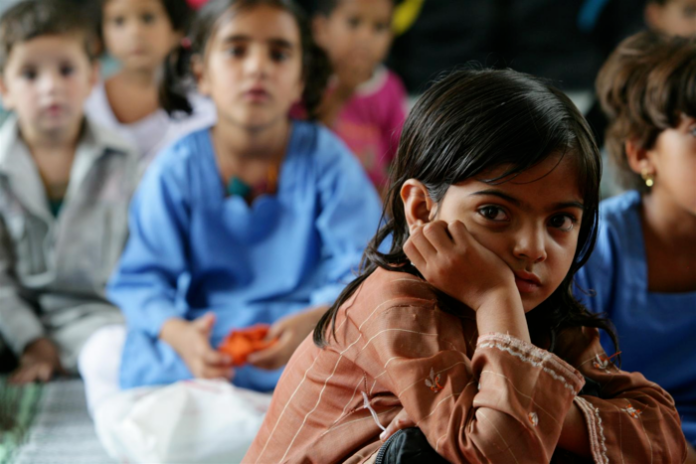Pakistan is the fifth populous country in the world, the third most populous nation in Asia and the second most populous country among Islamic countries. However, Pakistan also recognized itself as a developing state on the map of the world, but it has been lying backward in each developing aspect such as, education system, heath factor, industrial reforms, low economy and including high poverty throughout the country.
Pakistan has several cordial relationships and strong ties with most of the developing countries, working with a lots of developing organizations for improving her regional cooperation, and most importantly carrying a huge project with a very developing country (China) worth $62 billion, known as the China Pakistan Economic Corridor ( CPEC).
Although Pakistan makes a huge land associated with enormous various natural resources in different regions, importantly including the province ( Balochistan), yet the citizens are far from geting their each and every fundamental right and need. The fundamental education of every child at the age five to 16 was clearly asserted in Article 25A of the Constitution. Frustratingly, there is a huge number of out-of-school children in Pakistan yet, the government comes to power and expresses no concern over this alarming issue. Being out of school at an earlier age causes many prejudicial outcomes to the children as one of the abundant evidence is most of the out-of-school children are engaged in labouring at different workplaces like shops, garages as well as several children are involved in begging street to street.
The government must ensure effective efforts for developing a well education system in Pakistan. Over the past many years, Pakistan has not been working to reform the education sector and children are moving above the head of bad evils. It is obligatory for the government to accommodate education to the children according to the Constitution. Over the new censuses in Pakistan, the population of children has increased to over 63 million aged 5 to 16 years. But the public schooling system carries only 27 million children, while over 16 million children are enrolled in private schools, madressahs and non-formal educational institutions. At last, the government should own the issues and must do something about this issue
As per the assertion of a report that Pakistan has the world’s second-highest number of out-of-school children, counting 22.8 million children between the ages of 5 and 16, and representing 44 percent of children not attending schools. Actually, there are two kinds of out-of- school children ( OOSC ). The first is the child, who never attends the school in earlier age group and the rest of life too and the second kind of OOSC is the child who attends school in earlier classes and drops out very soon. Of the children who never attend the school, The PIDE report discovered new data “Pakistan has never provided a chance approximately to 1 in 4 (23.45%) children of ever attending school while around 7% had enrolled and dropped out in every year.”
Of the children who get dropped after enrolment, a data shows “The dropouts start to happen between 9 and 11 years of the age, after primary school age. The reasons are limited access to middle and high schools causing rising opportunity cost.
Comparing the four provinces of Pakistan, Balochistan is performing the worst as far as OOSC go,with 44 percent of the total. According to the report, in Balochistan, 64 percent of all OOSC aged 16 years never have attended school and the ratio of dropping out gradually increases in proportion with age. Balochistan reports 50 percent OOSC in 17 out of 28 districts and the district Shaheed Sikandarabad reported the highest number of OOSC at 76 percent and the following district ( Sherani) recorded them at 70 percent.
If we go into the gender proportions of OOSC in Balochistan, the girls face acute ignorance for enrolment in school. The number of girls OOSC is far greater than boys. According to the report, 54 percent of girls are out of school as compared to boys whose ratio is 46 percent. The total estimate is calculated that around 10.8 million girls are out of school whereas around 9.2 million boys are out of school. The report further added that in around 16 districts of Balochistan girls formed the higher ratio of OOSC.
The second province of Pakistan which has the lowest ratio of literacy is Sindh. Reportedly, in Sindh 63 percent of all school-aged children (16 years old or less) have never attended school. Similarly the report shows that Sindh has the ratio of 70 percent aged around nine years and followed by 69 percent aged around 11 years. The report further cleared that the enrolment rate rose from aging five to nine years and steadily fell down around age 11 years. The same trends goes on for both genders with enrolment rates higher for boys than girls. To add more information, 17 districts of Sindh have more out of school girls than boys while 11 districts of Sindh have more out of school boys than girls. Out of 29 districts of Sindh, 13 districts have an OOSC rate above 50 percent whereas seven districts have the lowest OOSC rates including six districts of Karachi and Hyderabad.
Both provinces ( Sindh and Balochistan) largely made the ratio of OOSC on the peak in Pakistan. The provinces of (Punjab and KPK ) are sufficiently stable and carry minimum enrolment of children in their schools.
Hence, our government and consult authorities have to understand the reason behind children being out of school in our country. According to the report, 87 percent of children are out of school because they complained aboutits being ‘too expensive’ and 13 percent of children are out of school owing to many reasons such as lack of their own interest or, unwillingness. No doubt, getting higher education has become so expensive that very poor people cannot educate their children and lack of awareness about the importance of education is another cause of children being out of school.
The government must ensure effective efforts for developing a well education system in Pakistan. Over the past many years, Pakistan has not been working to reform the education sector and children are moving above the head of bad evils. It is obligatory for the government to accommodate education to the children according to the Constitution. Over the new censuses in Pakistan, the population of children has increased to over 63 million aged 5 to 16 years. But the public schooling system carries only 27 million children, while over 16 million children are enrolled in private schools, madressahs and non-formal educational institutions. At last, the government should own the issues and must do something about this issue.























